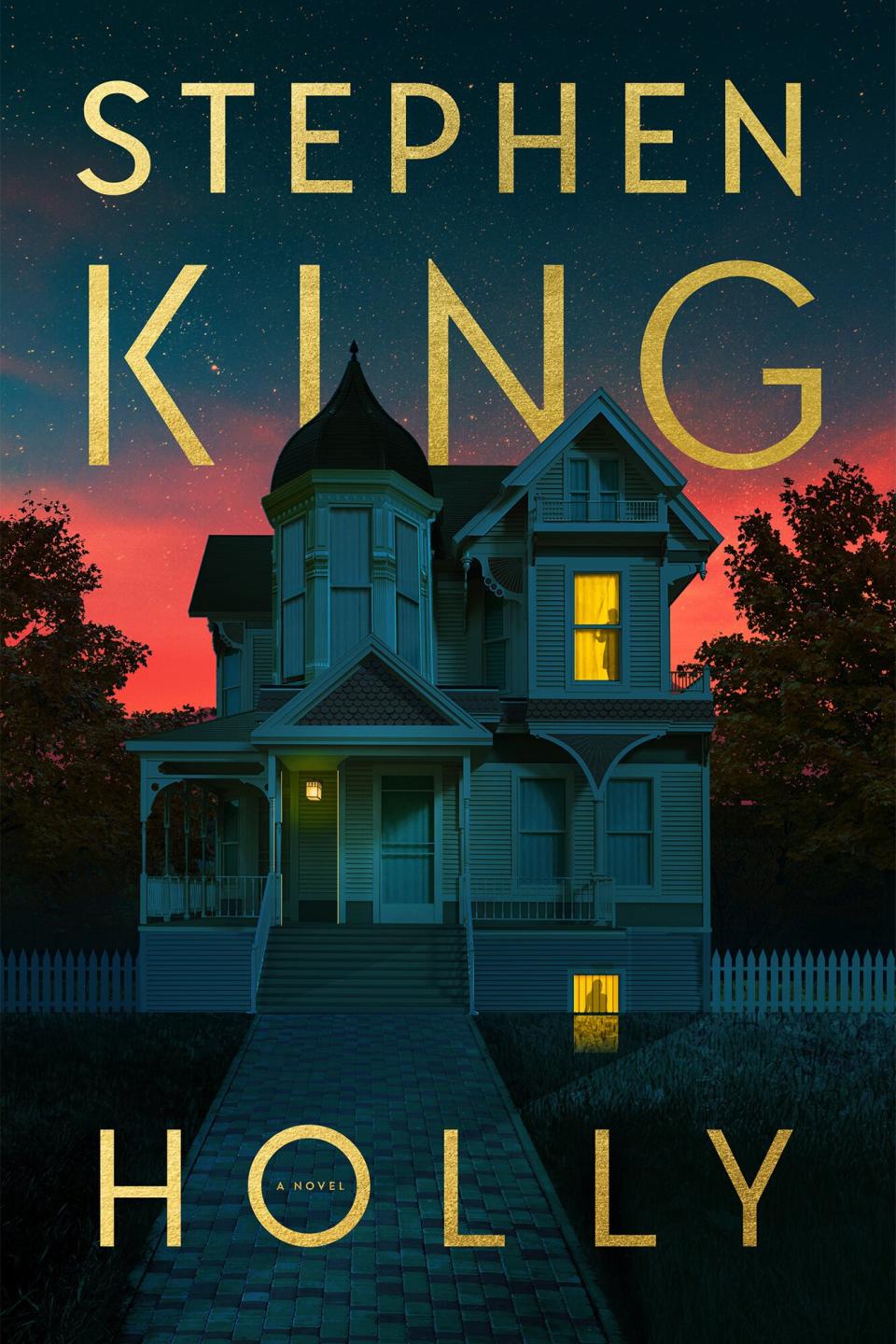Holly Gibney is back on the case in Stephen King's new novel: Read an excerpt from Holly
- Oops!Something went wrong.Please try again later.
Holly Gibney has been a recurring presence in Stephen King's books since he introduced the character in 2014's Mr. Mercedes, and over time she has transformed from a shy recluse to a full-fledged, occasionally tough private detective. Now Gibney is returning in King's new novel Holly to solve the gruesome mystery behind multiple disappearances in a Midwestern town, and EW has an exclusive excerpt.
When Penny Dahl calls the Finders Keepers detective agency for help locating her missing daughter, Holly is reluctant to accept the case. Her partner, Pete, has COVID. Her (very complicated) mother has just died. And Holly is meant to be on leave. But something in Penny Dahl's desperate voice makes it impossible for Holly to turn her down. Mere blocks from where Bonnie Dahl disappeared live professors Rodney and Emily Harris. They are the picture of bourgeois respectability: married octogenarians, devoted to each other, and semi-retired lifelong academics. But they are harboring an unholy secret in the basement of their well-kept, book-lined home, one that may be related to Bonnie's disappearance. And it will prove nearly impossible to discover what they are up to: They are savvy, they are patient, and they are ruthless. Holly must summon all her formidable talents to outthink and outmaneuver the shockingly twisted professors.
"I could never let Holly Gibney go," King said in a statement. "She was supposed to be a walk-on character in Mr. Mercedes and she just kind of stole the book and stole my heart. Holly is all her."
Holly will be published Sept. 5 by Scribner. Read an excerpt below.

Scribner 'Holly,' by Stephen King
Excerpt from Holly, by Stephen King
October 17, 2012
1
It's an old city, and no longer in very good shape, nor is the lake beside which it has been built, but there are parts of it that are still pretty nice. Longtime residents would probably agree that the nicest section is Sugar Heights, and the nicest street running through it is Ridge Road, which makes a gentle downhill curve from Bell College of Arts and Sciences to Deerfield Park, two miles below. On its way, Ridge Road passes many fine houses, some of which belong to college faculty and some to the city's more successful businesspeople—doctors, lawyers, bankers, and top-of-the-pyramid business executives. Most of these homes are Victorians, with impeccable paintjobs, bow windows, and lots of gingerbread trim.
The park where Ridge Road terminates isn't as big as the one that sits splat in the middle of Manhattan, but close. Deerfield is the city's pride, and a platoon of gardeners keep it looking fabulous. Oh, there's the unkempt west side near Red Bank Avenue, known as the Thickets, where those seeking or selling drugs can sometimes be found after dark, and where there's the occasional mugging, but the Thickets is only three acres of 740. The rest are grassy, flowery, and threaded with paths where lovers stroll and benches where old men read newspapers (more and more often on electronic devices these days) and women chat, sometimes while rocking their babies back and forth in expensive prams. There are two ponds, and sometimes you'll see men or boys sailing remote-controlled boats on one of them. In the other, swans and ducks glide back and forth. There's a playground for the kiddies, too. Everything, in fact, except a public pool; every now and then the city council discusses the idea, but it keeps getting tabled. The expense, you know.
This night in October is warm for the time of year, but a fine drizzle has kept all but a single dedicated runner inside. That would be Jorge Castro, who has a gig teaching creative writing and Latin American Lit at the college. Despite his specialty, he's American born and bred; Jorge likes to tell people he's as American as pie de manzana.
He turned forty in July and can no longer kid himself that he is still the young lion who had momentary bestseller success with his first novel. Forty is when you have to stop kidding yourself that you're still a young anything. If you don't—if you subscribe to such self-actualizing bullshit as "forty is the new twenty-five"—you're going to find yourself starting to slide. Just a little at first, but then a little more, and all at once you're fifty with a belly poking out your belt buckle and cholesterol- busters in the medicine cabinet. At twenty, the body forgives. At forty, forgiveness is provisional at best. Jorge Castro doesn't want to turn fifty and discover he's become just another American manslob.
You have to start taking care of yourself when you're forty. You have to maintain the machinery, because there's no trade-in option. So Jorge drinks orange juice in the morning (potassium) followed most days by oatmeal (antioxidants), and keeps red meat to once a week. When he wants a snack, he's apt to open a can of sardines. They're rich in Omega 3s. (Also tasty!) He does simple exercises in the morning and runs in the evening, not overdoing it but aerating those forty-year-old lungs and giving his forty-year-old heart a chance to strut its stuff (resting heart rate: 63). Jorge wants to look and feel forty when he gets to fifty, but fate is a joker. Jorge Castro isn't even going to see forty-one.
From HOLLY by Stephen King. Copyright 2023 by Stephen King. Reprinted by permission of Scribner, an Imprint of Simon & Schuster, Inc.
Sign up for Entertainment Weekly's free daily newsletter to get breaking news, exclusive first looks, recaps, reviews, interviews with your favorite stars, and more.
Related content:

